Understanding Predators in a Changing Landscape
Lions and leopards are among the most iconic species of the Kalahari, yet their survival depends on a delicate balance between prey, people, and the environment. To protect them, we must first understand what they eat, how they hunt, and how their choices shift across seasons and landscapes. The Predator Diets in the Kalahari project aims to do exactly that, shedding light on the lives of these big cats, while helping communities and wildlife live side by side.
Predation is not random. It is shaped by factors such as prey availability, water sources, vegetation cover, and even the risks posed by humans at the edge of protected areas. By following lions and leopards closely, we gain critical insights into predator-prey relationships, knowledge that underpins conservation and guides strategies for coexistence.
How We Track Lions and Leopards
At the heart of this project lies innovative technology combined with traditional skills. Selected lions and leopards in the reserve are fitted with GPS collars. These collars record their locations throughout the day and night, allowing researchers to see patterns of movement across vast stretches of wilderness.
When a lion or leopard lingers in one place for several hours, it is often a sign of a kill. Field teams then head to these sites to investigate. Experienced San trackers, renowned for their ability to interpret subtle signs in the sand, help confirm whether a hunt has taken place. Together, the team records details about the species hunted, feeding behavior, and whether other predators or scavengers joined in.
This method blends modern science with ancient knowledge. Technology provides the clues, but it is human expertise on the ground that brings the story to life. Every confirmed kill builds a richer picture of how lions and leopards survive in the Kalahari.
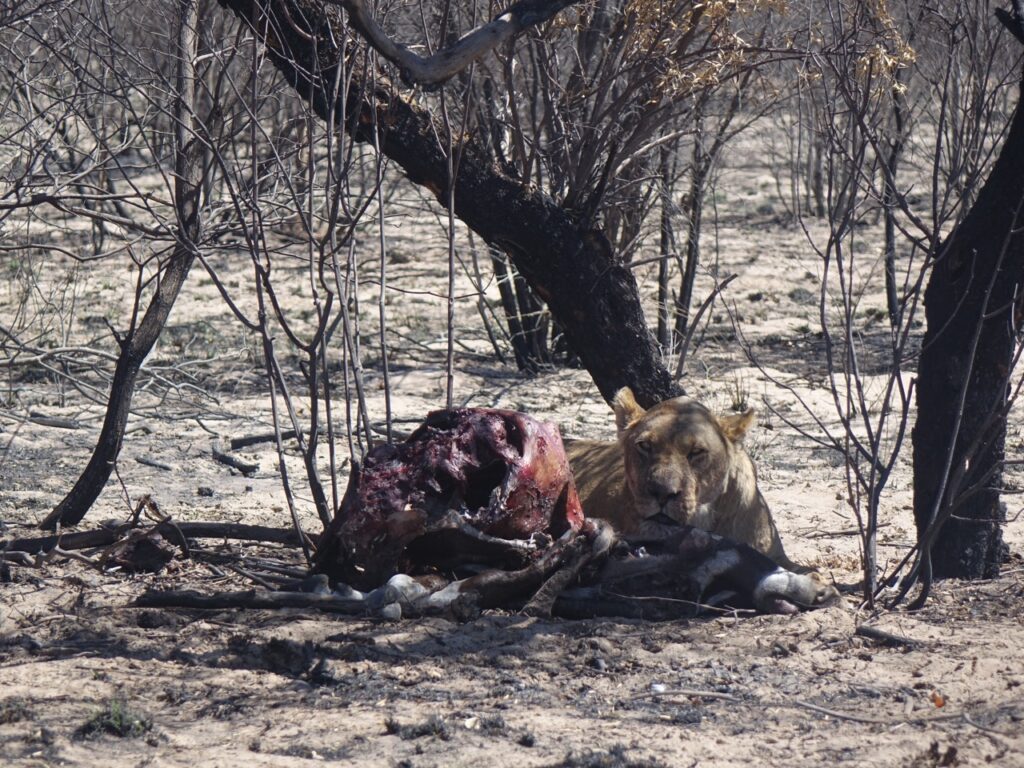
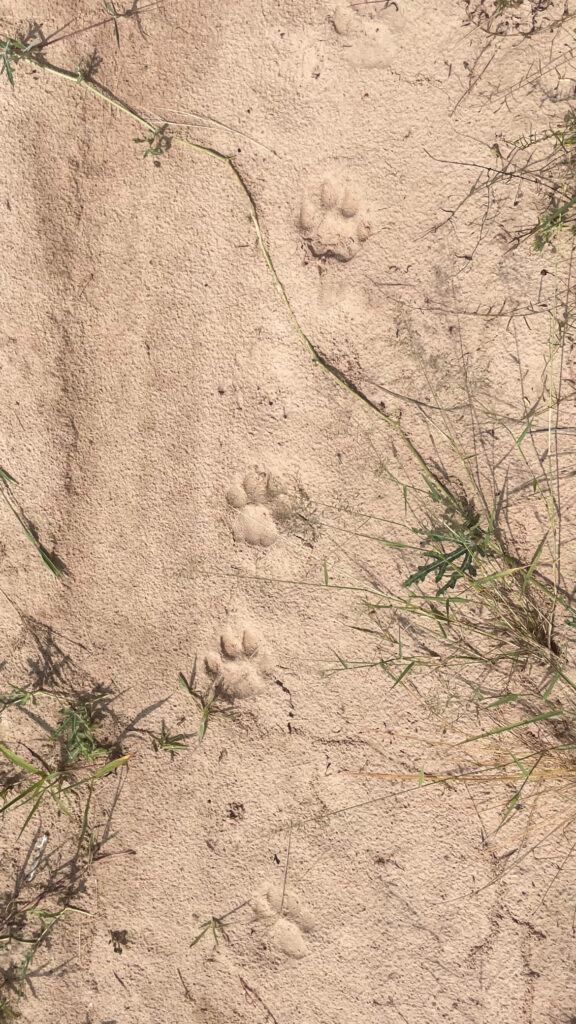
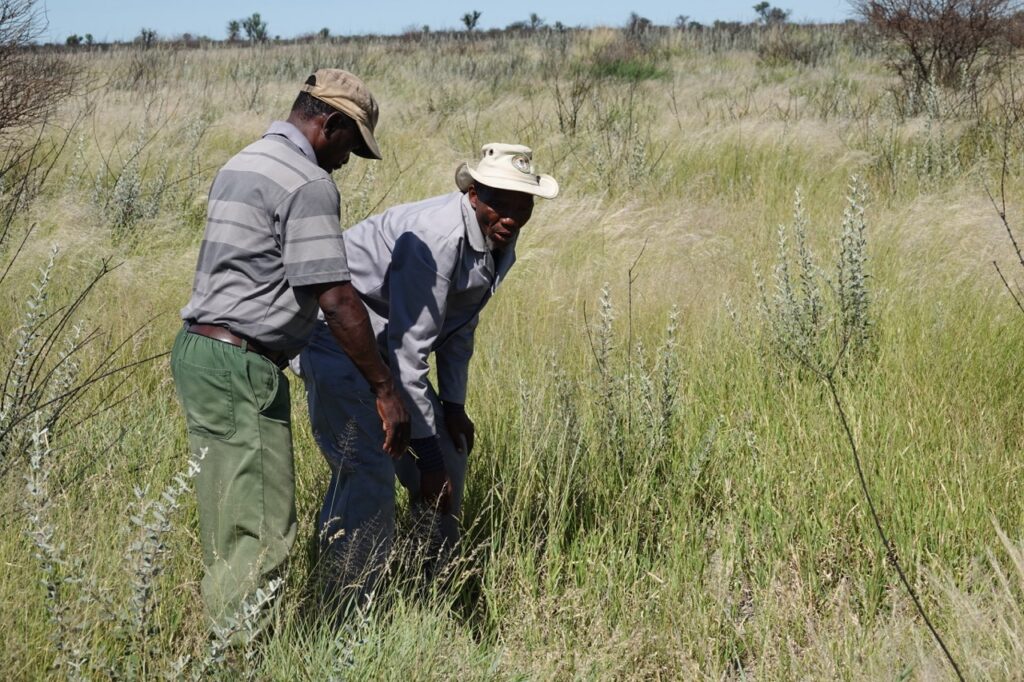
Lions: Social Hunters of the Savanna
Lions are the only truly social cats, living and hunting in groups. Their cooperative nature means they can target large prey, such as antelope or even giraffe, but also makes them adaptable when food is scarce. Sometimes, solitary lions strike out on their own, turning to smaller animals, or in some cases, livestock near village boundaries.
GPS tracking shows that lions spend significant time at their kills, but also that not all stops are about hunting. They may remain in one spot to rest, mate, or care for cubs. Distinguishing between these behaviors is vital to avoid misinterpretation, which is why ground verification remains so important.
Female lions, especially those raising cubs, often prefer areas with dense cover near waterholes. These locations provide both protection for their young and better chances of ambushing prey. Males, by contrast, tend to roam more widely, sometimes straying outside reserve boundaries in search of food or territory. These movements bring them into greater contact with people and livestock, increasing the risk of conflict.
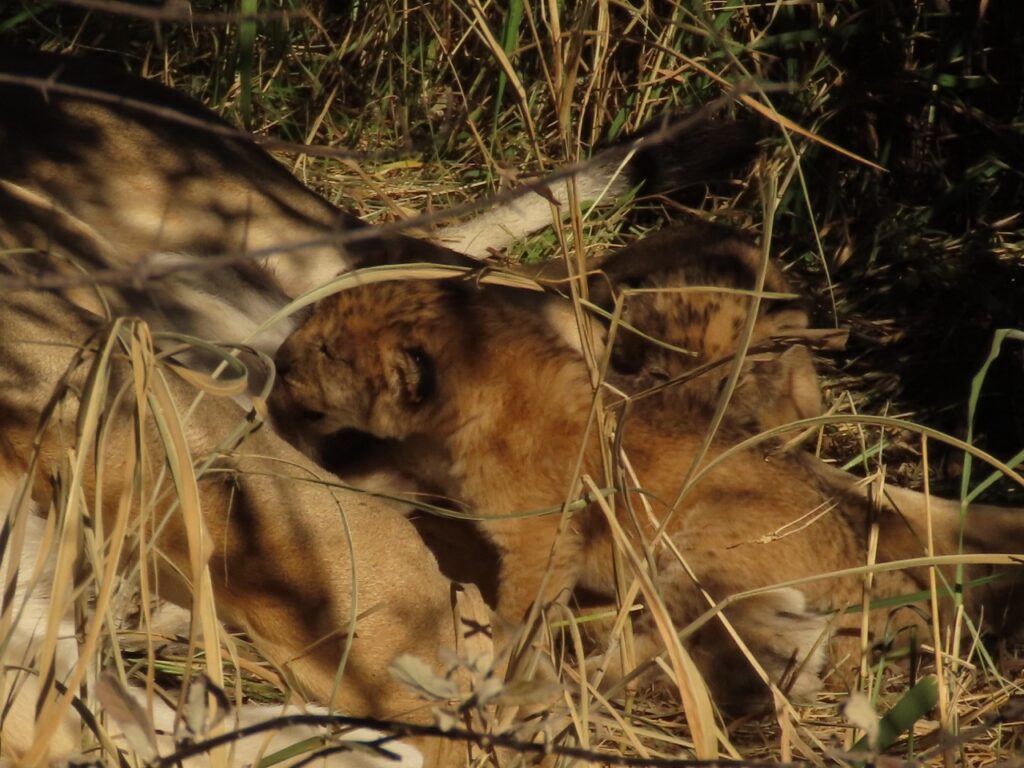
Leopards: Masters of Stealth
Leopards, though more elusive, are equally important in this study. Unlike lions, they are solitary and rely on stealth rather than strength in numbers. They typically target medium-sized prey, which they often haul into trees to avoid losing their meal to larger competitors.
Because leopards are harder to spot, collar data is especially valuable for understanding their diets and behaviors. Like lions, they may occasionally hunt livestock when opportunities arise near human settlements. By documenting these events, the project helps identify patterns and hotspots where mitigation efforts are most needed.
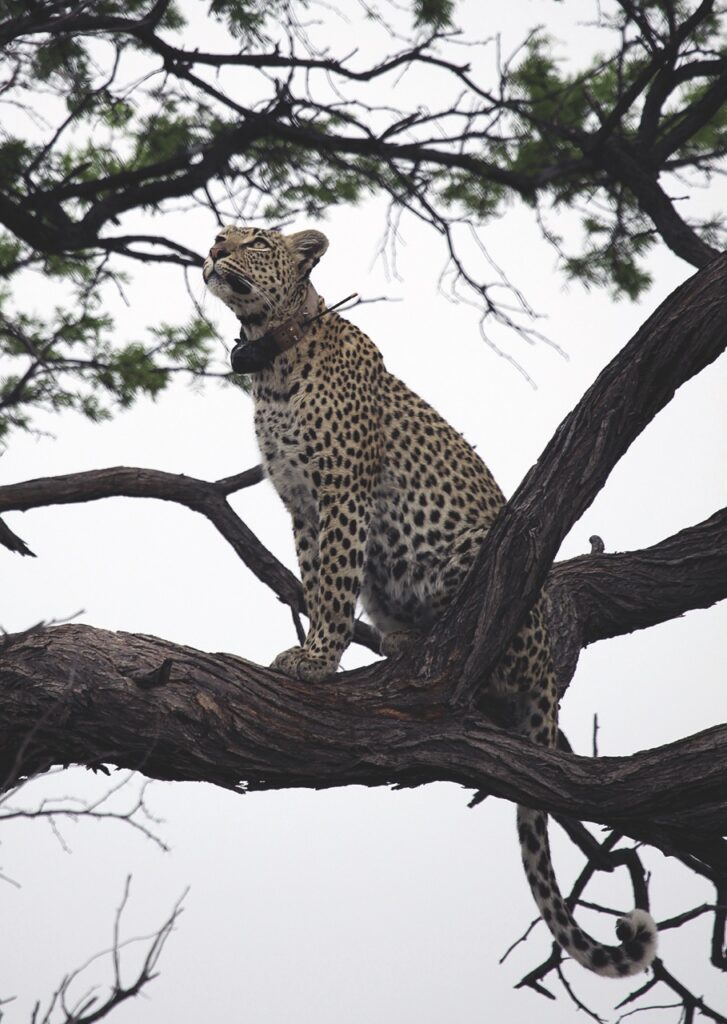
Predator-Prey Dynamics
The availability and distribution of prey shape how predators behave. In arid environments like the Kalahari, herbivores cluster around scarce water sources, particularly during the dry season. This in turn attracts predators, creating areas of higher risk for prey species.
Yet the picture is more complex. Prey animals are not passive, they develop strategies to reduce their chances of being hunted, such as traveling in larger groups or avoiding risky habitats at certain times. Lions and leopards must adapt their hunting strategies in response. These interactions form a dynamic balance that shifts with the seasons, weather, and human presence.
By monitoring predator diets over time, we can see how flexible or specialized their hunting patterns are. Do lions prefer certain species regardless of availability? Do leopards switch to easier targets during dry years? These questions matter for conservation, as they highlight which prey species are most critical to sustain predator populations.
Human-Wildlife Coexistence
One of the most pressing issues in conservation today is the overlap between wildlife and people. Around Khutse Game Reserve and the southern Central Kalahari, livestock graze near the edges of protected areas. Fences erected to limit conflict are often damaged by elephants or exploited by predators, allowing lions and leopards to slip through.
When livestock are taken, farmers may retaliate, leading to the loss of predators and escalating tensions. By recording when and where livestock predation occurs, this project provides vital data to inform mitigation. For example, understanding seasonal patterns of livestock raids can help communities adjust herding practices, strengthen enclosures, or target protective measures more effectively.
The goal is not only to reduce losses for farmers but also to safeguard the future of lions and leopards. Conservation can only succeed when local people feel supported and protected from the costs of living alongside predators.
